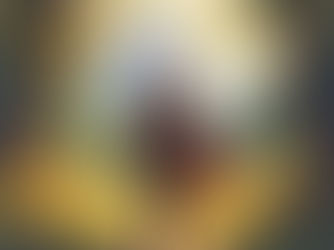
Check out the Arcverse's first novel

Faelvur, the dark elven god of fire


Check out the Arcverse's first novel

Role Play Games for Beginners
Discover Worlds. Tell Stories. Create Legends
Welcome to the Arcverse
Your gateway to tabletop roleplaying games — whether you’re starting with Dungeons & Dragons or exploring new systems and genres.
We offer expert RPG advice for beginners, Game Master tools, and worldbuilding guides to help you create and run unforgettable adventures. Whether you play fantasy, sci-fi, cyberpunk, horror, superheroes, or post-apocalyptic settings, the Arcverse is your home for creativity, storytelling, and game-ready inspiration.
Start your next campaign. Build your world. Shape your legend.
Monstrosity
In Dungeons & Dragons (D&D), the term "Monstrosity" refers to a distinct creature type characterized by its unnatural origins and often terrifying appearance. Monstrosities are monsters in the strictest sense, embodying entities that are not ordinary, not truly natural, and almost never benign. They stand apart from "Beasts," which represent natural animals and creatures. Monstrosities often arise from magical manipulations, cursed existences, or other extraordinary circumstances, making them a diverse and unpredictable category within the game's ecosystem.
The distinction between Monstrosities and Beasts lies in their nature and origin. While Beasts usually follow the patterns of natural wildlife, Monstrosities are creations or alterations that defy the norms of the natural world. They can range from creatures created through arcane experiments to those born from the meddling of deities or other powerful entities. This category serves as a catch-all for creatures that do not fit neatly into other classifications due to their unique traits or backgrounds.
Monstrosities play a significant role in D&D campaigns, offering Dungeon Masters a broad palette of adversaries to challenge players with encounters that are as diverse as they are unpredictable.
These entities often defy the natural order, bearing traits and abilities that set them apart from ordinary wildlife or even other supernatural beings. Unlike beasts that operate on instinct and can sometimes be benign, monstrosities usually harbor malevolent intentions or play roles in the world that bring them into conflict with adventurers and civilians alike.
Classic D&D Monstrosities:
1. Basilisk: Known for its deadly gaze that can petrify victims, turning them into stone. Basilisks are feared for this unique ability, which makes them formidable opponents even for the most experienced adventurers.
2. Rust Monster: This creature poses a unique threat to adventurers relying on metal equipment. Its ability to corrode metal on contact, including the armor and weapons of its foes, can drastically shift the dynamics of an encounter.
3. Chimera: A blend of lion, goat, and dragon, the Chimera is a testament to the unnatural and fearsome nature of monstrosities. With the ability to breathe fire and attack with the strength of its composite parts, it epitomizes the danger these creatures represent.
4. Beholder: Although not fitting into the natural world, Beholders are a pinnacle of monstrosity with their alien appearance and powerful magical abilities. Each of its many eyes can unleash a different magical effect, making it one of the most unpredictable and dangerous foes.
5. Owlbear: A hybrid of an owl and a bear, this creature combines the strengths of both animals. It has the ferocity of a bear with the keen senses of an owl, making it a deadly predator in its woodland home.
Monstrosities in D&D serve as both a challenge and a source of intrigue for players, offering endless possibilities for encounters that test a party's combat abilities, resourcefulness, and sometimes even their moral compass. These creatures, with their diverse origins ranging from magical experiments gone awry to the meddling of gods, enrich the narrative of any campaign and ensure that adventurers never know quite what to expect when they set out to explore the fantastical world of Dungeons & Dragons.
Sources
Reddit - (5e) What MAKES something a Monstrosity?
Dungeons & Dragons Lore Wiki - Monstrosities
RPG Stack Exchange - What is the distinction between Monstrosities and Beasts?
Quora - What is the distinction between monstrosities and beasts D&D 5e monsters terminology
Dungeons & Dragons Lore Wiki - Fandom - Monstrosity
Nerdarchy - Dissecting the 5E D&D Monstrosity Creature Type
Dungeons & Dragons Lore Wiki - Monstrosities
Forgotten Realms Wiki - Monstrosities
Nerdarchy - Dissecting the 5E D&D Monstrosity Creature Type
Special Traits for Monsters in D&D 5e















